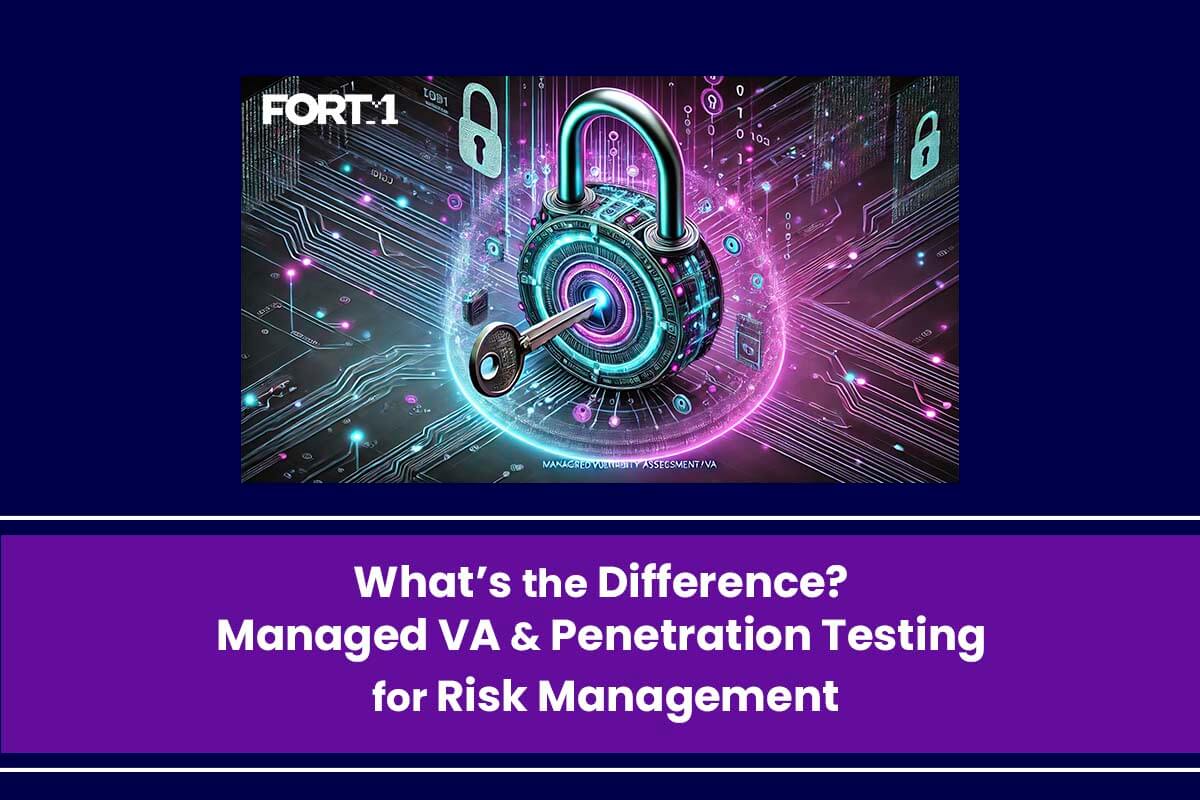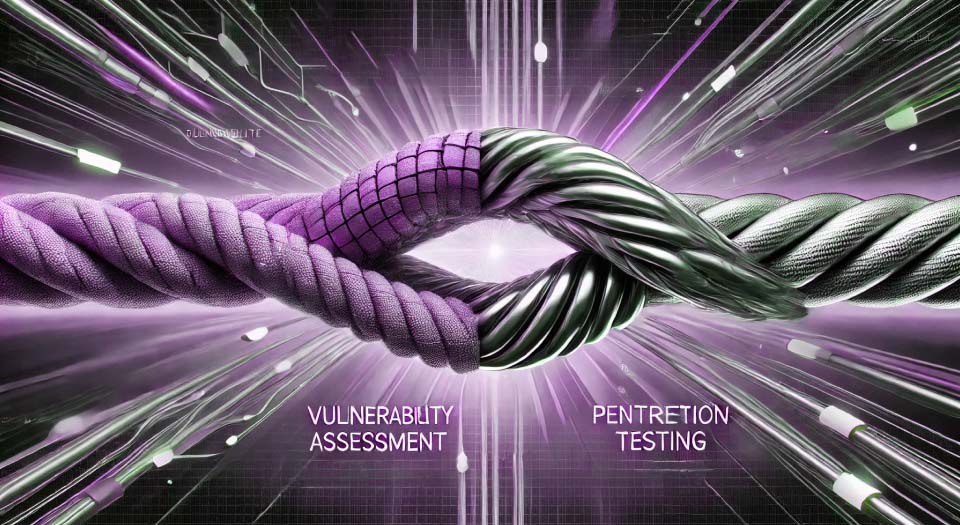




VA vs Pen Testing is a critical comparison for organisations seeking to strengthen their cybersecurity posture. Both methods serve essential roles in identifying and reducing risk, but they address different layers of vulnerabilities.
Managed Vulnerability Assessment (VA) provides broad visibility by continuously scanning systems for known issues, while Penetration Testing simulates targeted attacks to uncover deeper weaknesses that automated tools may overlook. Each approach contributes uniquely to risk detection and mitigation.
IBM’s 2023 Cost of a Data Breach Report showed that organisations lacking layered assessment strategies incurred higher breach costs—averaging over USD 5 million. This underscores the importance of applying both VA and Pen Testing within a unified risk management framework.
This article explores the differences, strengths, and complementary value of VA vs Pen Testing in effective cybersecurity planning.
Cybersecurity risk management is a structured process that enables organisations to identify, assess, and mitigate threats to their information assets. It involves anticipating potential threats, understanding existing vulnerabilities, and evaluating the likelihood and impact of exploitation. The goal is to make informed decisions that reduce risk to an acceptable level while aligning with business objectives.
Globally recognised frameworks guide this process. The ISO/IEC 27005 standard provides a comprehensive approach to information security risk management within the broader ISO 27001 framework. Similarly, the NIST SP 800-30 publication offers a detailed methodology for risk assessments tailored to various organisational sizes and risk environments. These frameworks promote consistency, accountability, and measurable outcomes.
A complete risk assessment evaluates three core components:
When these elements are analysed together, organisations gain a clearer picture of their overall risk exposure and can implement effective control measures.
According to NIST SP 800-30, risk management should be an iterative and ongoing process. The stages are typically visualised as follows:

Managed Vulnerability Assessment (VA) refers to the structured, ongoing process of detecting, classifying, and reporting known vulnerabilities across an organisation’s IT environment. These assessments are typically automated and conducted at regular intervals—daily, weekly, or monthly—by internal security teams or outsourced providers as part of a managed security service.
The primary goal of Managed VA is to identify exposures before malicious actors can exploit them. Unlike ad hoc or reactive scanning, this approach ensures continuous visibility into the threat landscape and enhances an organisation’s ability to reduce risk in a timely and consistent manner. By leveraging vulnerability databases and scanning engines, Managed VA tools can detect outdated software, misconfigurations, missing patches, and other known security weaknesses.
Implementing Managed VA for risk reduction also supports regulatory compliance requirements, including those set by frameworks such as ISO/IEC 27001, PCI DSS, and the Australian Cyber Security Centre’s Essential Eight. Regular vulnerability assessments provide audit trails, measurable outcomes, and help prioritise remediation efforts based on severity and asset criticality.
According to OWASP’s Vulnerability Management Guide, incorporating Managed VA into the broader security lifecycle is critical to maintaining effective defensive posture across evolving infrastructures.
Penetration Testing, often referred to as ethical hacking, is a controlled simulation of a cyberattack carried out by skilled professionals to uncover exploitable vulnerabilities within an organisation’s systems, applications, or networks. Unlike automated vulnerability scans, Pen Testing provides a point-in-time evaluation that mimics real-world attack scenarios, exposing weaknesses that might otherwise remain undetected.
Penetration testing goes beyond identifying missing patches or misconfigurations. It reveals logical flaws, authentication weaknesses, insecure integrations, and business logic errors—issues typically beyond the reach of scanning tools. This makes it a critical tool in understanding how a potential attacker could chain multiple weaknesses to gain unauthorised access.
By simulating adversarial behaviour, Pen Testing enables businesses to assess the potential impact of a breach and validate the effectiveness of their existing security controls. It is particularly valuable for high-risk assets, critical infrastructure, and applications that handle sensitive data.
The Australian Computer Society’s guide on penetration testing highlights how structured testing provides assurance to stakeholders and supports due diligence during mergers, acquisitions, or compliance audits.
To better understand how Pen Testing compares with Managed VA, see the following table:
| Criteria | Managed Vulnerability Assessment | Penetration Testing |
|---|---|---|
| Frequency | Ongoing or scheduled (e.g. weekly/monthly) | Periodic (e.g. quarterly, annually) |
| Depth | Automated surface-level detection | Manual deep testing of exploit paths |
| Scope | Known vulnerabilities and misconfigurations | Complex logic flaws and business risks |
| Cost | Lower ongoing cost | Higher one-time engagement cost |
| Value | Continuous visibility and early detection | Insight into real-world risk exposure |
Although both Managed Vulnerability Assessment (VA) and Penetration Testing are essential to cybersecurity programs, they serve different purposes within a risk management strategy. Understanding their differences helps organisations make more informed, targeted security investments.
Although both Managed Vulnerability Assessment (VA) and Penetration Testing are essential to cybersecurity programs, they serve different purposes within a risk management strategy. Understanding their differences helps organisations make more informed, targeted security investments.
VA is performed regularly or continuously—often weekly or monthly—to provide ongoing visibility. Penetration Testing is typically conducted periodically (e.g., quarterly or annually), especially after significant infrastructure changes.
Managed VA relies on automated tools and vulnerability databases, enabling scalability and speed. Pen Testing, however, is a human-led process that uses creativity and technical knowledge to explore potential attack paths.
VA identifies technical risks such as outdated software, missing patches, and misconfigurations. Pen Testing uncovers real-world exploit scenarios, including privilege escalation, insecure logic, and attack chaining.
The following table provides a side-by-side comparison of their core differences:
| Aspect | Managed Vulnerability Assessment | Penetration Testing |
|---|---|---|
| Objective & Scope | Automated identification of known vulnerabilities | Simulated attacks to uncover real-world exploit paths |
| Frequency & Timing | Regular or ongoing (e.g., weekly/monthly) | Periodic (e.g., annually or after system changes) |
| Tooling & Human Input | Automated scanners and databases | Manual testing by cybersecurity professionals |
| Risk Types Identified | Known software flaws, configuration errors | Chained exploits, business logic flaws, privilege escalation |
| Use Case | Ongoing compliance and visibility | Impact assessment and control validation |

An effective cybersecurity risk management strategy cannot rely on a single assessment method. Managed Vulnerability Assessment (VA) and Penetration Testing serve distinct yet complementary purposes. When used together, they create a more accurate and complete view of an organisation’s security posture.
Managed VA provides breadth. It offers continuous visibility into known vulnerabilities, enabling rapid detection of configuration flaws, missing patches, or outdated components. This broad coverage helps ensure that baseline security hygiene is maintained across systems.
Penetration Testing, in contrast, provides depth. It simulates real-world attacks to uncover exploit paths that automated tools often miss—such as chained vulnerabilities, logic flaws, or insecure integrations. It also tests the effectiveness of layered defences and human responses.
By combining both approaches, organisations benefit from proactive detection and realistic validation of threats. This dual approach not only strengthens security but also supports compliance with standards such as ISO/IEC 27001, ACSC Essential Eight, and PCI DSS. It may also improve standing with cyber insurance providers, who increasingly require evidence of both ongoing assessments and adversarial testing.
A mid-sized Australian financial services firm, with approximately 80 employees and operations across New South Wales and Victoria, implemented Managed VA as part of its cybersecurity risk management strategy. The company conducted monthly automated scans to detect known vulnerabilities and applied recommended patches promptly. While this approach helped maintain technical hygiene, it missed deeper flaws in the company’s web-based client portal.
In early 2024, an external penetration test was commissioned following a failed internal audit. During testing, ethical hackers identified a logic flaw in the account verification process, which allowed unauthorised access by manipulating URL parameters. This vulnerability had not been detected by previous automated scans, as it did not match any known vulnerability signatures.
By leveraging Pen Testing Risk Solutions, the company averted what could have been a serious data breach involving client financial records. This example illustrates that while Managed VA for risk provides ongoing visibility, it cannot replace the depth of analysis that Pen Testing delivers.
Using both techniques together allowed the business to strengthen controls, update incident response protocols, and meet compliance obligations more confidently. The lesson: automation alone is not enough—human-driven testing plays a vital role in protecting high-impact systems.
Both Managed Vulnerability Assessment (VA) and Penetration Testing offer distinct value in cybersecurity risk management. While Managed VA ensures broad, continuous visibility of known vulnerabilities, Pen Testing provides deeper insights into real-world attack scenarios and complex exploit chains. On their own, each contributes to risk reduction, but when applied together, they form a more resilient and comprehensive defence.
This integrated approach not only enhances technical controls but also supports compliance, audit readiness, and cyber insurance requirements.
If your organisation is ready to take a proactive step towards more robust protection, Fort 1 offers expert-led solutions tailored to your needs.

Fort1 provides comprehensive cybersecurity solutions tailored to protect your business from evolving digital threats. With expertise in penetration testing, dark web monitoring, and managed detection services, we empower organisations to stay secure and resilient in the face of modern cyber challenges.
Copyright @2024 Fort1. All Rights Reserved by Fort1.